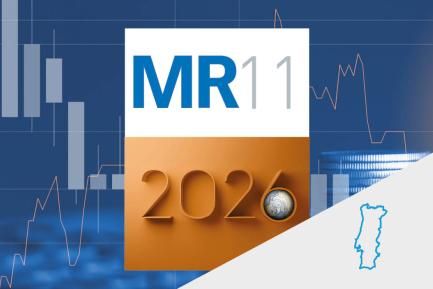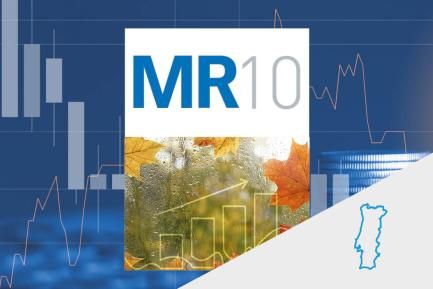The United Kingdom grew by 1.4% in 2019, after stagnating in Q4 2019
The United Kingdom grew by 1.4% in 2019, after stagnating in Q4 2019 (1.1% in year-on-year terms). The stagnation of private consumption and the contraction of investment compared to the previous quarter, partly affected by uncertainty surrounding Brexit, explain the weak figure at the end of last year. For 2020, a somewhat clearer political outlook should favour more buoyant economic activity. Following the United Kingdom’s official departure from the EU on 31 January, in February a transition period began that will last until the end of the year and during which the United Kingdom will remain within the European single market and subject to EU rules. In addition, the terms of the new relationship between the two regions will be negotiated during this period. This will be a complicated process and will no doubt require more time than stipulated.
In the euro area, the pace of growth was modest at the end of 2019 and the outlook for 2020 remains moderate. The region grew by 0.1% quarter-on-quarter in Q4 2019, which placed the total figure for the year at 1.2%. The latest economic activity indicators also suggest that the region will maintain positive but moderate growth rates. Among other factors, of particular concern is the weakness of the German economy. It registered 0.0% quarter-on-quarter growth in Q4 2019 (0.6% for the year as a whole), hampered by a decline in investment in machinery and equipment, as well as by a stagnation of private consumption. The trend in consumption is concerning, as it had proven resilient in the preceding quarters. In addition, the country will feel the loss of buoyancy in global trade flows expected in the early stages of the year. Finally, the coronavirus epidemic gained strength in Europe at the end of the month and will probably act as another restriction for economic activity. In this context, while we have reduced our forecasts for the growth of the euro area in 2020 by only 1 decimal point, to 1.0%, an intensification of the COVID-19 outbreak in Europe could lead to further reductions over the coming months.
Portugal ended 2019 on a good note, but it is not immune to the uncertainty of the coronavirus
The economy grew by a solid 2.2% in 2019. Economic activity accelerated in Q4 2019 (2.2% year-on-year and 0.7% quarter-on-quarter) thanks to a better than expected contribution from external demand (+1.3 pps), partly as a result of the statistical revisions that the Bank of Portugal has carried out in the balance of payments series. Domestic demand, meanwhile, had a more moderate contribution in the last quarter of the year, although in 2019 as a whole it has remained the driving force behind the expansion. In particular, the 2.2% GDP growth rate in 2019 reflects a 2.7-pp contribution from domestic demand (this includes investment, which grew by an impressive 6.5%, boosted by the acceleration of investment in intellectual property products up to +6.5% and in construction up to 9.4%). External demand, on the other hand, provided a negative contribution to GDP of 0.6 pps for the year as a whole, largely explaining the slowdown of GDP compared with the 2.6% registered in 2018. In 2020, however, some indicators are starting to show some deterioration. Whereas in January the Bank of Portugal’s coincident indicators remained strong (2.0% in aggregate activity and 2.4% in private consumption), in February the consumer and industry confidence indices declined to –8.1 points (the lowest level since June 2019) and –4.2 points, respectively. This decline is mainly due to less positive expectations with regard to the country’s economic situation over the next 12 months, which may reflect the unknown impact of the COVID-19 coronavirus. In fact, this uncertainty factor is what leads us not to improve our growth forecast for 2020 (1.7%), in spite of the strong growth in 2019.
Slowdown in the labour market in the closing stages of 2019. The population in work continued to rise in Q4 2019 (+24,600 people), albeit at a slower pace than in the past (0.5% year-on-year, versus 0.9% in Q3 and 2.3% for 2018 as a whole). On the other hand, the unemployment rate rose to 6.7% (versus 6.1% in Q3). The deterioration in the unemployment rate at the end of the year is normal, but on this occasion it was higher than expected as a result of the significant rise in the overall labour force, and the foreign labour force in particular, in addition to the reduced capacity to generate employment in a more mature phase of the cycle. For 2020, we anticipate that the labour market will continue to improve, albeit at a much more moderate rate than in recent years.
The current account balance ends 2019 with a slight deficit. After six years in positive territory, the current account balance ended 2019 with a deficit of –0.1% of GDP (181.5 million euros), which represents a deterioration of 3 decimal points compared to the +0.2% registered in 2018. This was a result of the deterioration in the trade deficit in goods (7.9% of GDP; a deficit 2 decimal points greater than in 2018, affected by the import component of investment), as well as the lower surplus of non-tourism services (+2.1% of GDP, –0.25 pps compared to 2018), since the tourism surplus improved by 1 decimal point to reach 6.2% of GDP. The sum of the current account and capital balance, meanwhile, remained positive, allowing the country to continue to reduce its external indebtedness. In particular, the overall surplus stood at +0.9% of GDP (5 decimal points lower than in 2018), while external debt improved, falling to 85.1% of GDP (89.5% in 2018).
Tourism activity accelerated in 2019. Last year, Portugal registered a total of 27 million tourists, of which 11 million were domestic and 16 million, foreign. This represented a 7.3% increase in tourism activity in 2019 (5.3% in 2018), with a 7.1% increase in the number of international tourists (4.8% in 2018). Tourists from Spain, the US and Brazil were primarily responsible for this trend, accounting for more than half of the total growth in foreign tourists. Furthermore, the average revenue per available room increased once again in 2019, reaching 49.4 euros (48.5 euros in 2018), while revenues of tourist accommodation establishments grew by 7.3%. If these trends continue, Portugal could exceed 17 million international tourists in 2020. However, tourism will probably be one of the sectors to suffer the most from the coronavirus health emergency.
Meagre inflation rates persist. In February, headline inflation slowed to 0.4% year-on-year (0.8% in January), due to both the fall in energy prices and the slowdown in core inflation. The latter excludes energy prices and unprocessed food, and stood at 0.1% year-on-year, 0.3 pps lower than in January.
Demand for credit remained strong in 2019. New lending to the non-financial private sector grew by 8.9% year-on-year in 2019 (12.3% in 2018). By segment, new lending for the purchase of housing accelerated in the closing months of last year, following the slowdown in the first few months (in 2019 as a whole, it rose by 10.4%). Consumer lending was also buoyant, with growth of 14.8%. In both cases, however, the figures reflect a base effect: in the final months of 2018, both segments were adversely affected by the Bank of Portugal’s implementation of stricter macroprudential measures in the granting of credit. Finally, growth was also robust in the field of non-financial firms (5.6%, versus 11.8% in 2018). Despite the buoyancy of new lending, the stock of credit to the non-financial private sector decreased again at the end of the year (–0.4% year-on-year), due to the contraction of credit of non-financial firms (–3.5% year-on-year; adjusting for sales of doubtful loans, it would have increased by 0.7%). As for households, the 1.5% year-on-year increase was largely due to the growth in consumer credit (+10.6% year-on-year).










